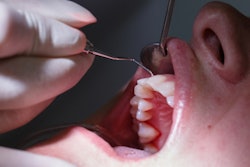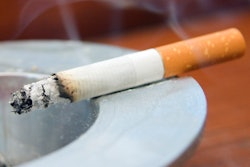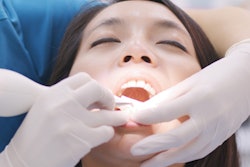
Physical activity can stave off inflammation, which in turn could possibly decrease the risk of developing periodontitis. However, not all bodily movements appear to offer the same benefits. The large U.S. study was published on January 2 in the Journal of Clinical Periodontology.
Leisure-time physical activity, including sports and recreational walking, protects against periodontitis, while occupational activity, including household chores or construction work, is a risk indicator for gum disease, the authors wrote.
"Clarifying the possible preventive role of physical activity on periodontitis would be relevant for oral healthcare providers, since this could represent a target for intervention as part of the Step 1 of periodontal therapy," wrote the authors, led by Dr. Mario Romandini of the faculty of odontology at University Complutense, in Madrid.
Medical professionals have touted regular physical activity as the key to weight management, better brain health, and a reduced risk of developing certain diseases. However, not all types of movements may be equal in their oral health benefits.
Leisure-time physical activity is considered a preventive factor for most chronic noncommunicable diseases, and the movements associated with this type of activity and psychological well-being have correlated with better cardiometabolic function and a decreased state of low-grade systemic inflammation.
However, occupational physical activity, which often involves long-lasting static load and repetitive working postures, has been known to cause negative effects on psycho-physical health and low-grade systemic inflammation. Therefore, unlike activities done during leisure time, high levels of movements done related to professions have shown an increased incidence of several noncommunicable diseases, according to the study.
To evaluate the association between leisure-time and occupational physical activity and periodontitis, researchers analyzed data from 10,679 adults using the U.S. National Health and Nutrition Examination Survey (NHANES) 2009-2014 database. The Global Physical Activity questionnaire was used to assess physical activity and classify it as high or low leisure-time or occupational activity. Periodontal status was assessed through a full-mouth periodontal examination, and subjects were classified according to the American Academy of Periodontology and the U.S. Centers for Disease Control and Prevention. Then, regression analyses were applied.
Multiple regression analyses showed high levels of physical activity during leisure time as a protective indicator for periodontitis (odds ratio [OR], 0.81; 95% confidence interval [CI]: 0.72, 0.92), while high levels of physical activity related to work were identified as a significant risk indicator (OR, 1.16; 95% CI, 1.04, 1.30). Furthermore, the combination of low leisure-time physical activity and high occupational activity showed a cumulative independent association with periodontitis (OR, 1.47; 95% CI, 1.26, 1.72), according to the study.
The study had multiple limitations, including its cross-sectional design. This type of design prevents the evaluation of causality and restricts the value of the reported mediation analyses, the authors wrote.
In the future, randomized clinical trials should be conducted to explore the potential effect of physical activity counseling both on the primary prevention of gum disease, as well as part of the first stage of periodontal therapy, they wrote.
"The possible beneficial effects of LTPA (leisure-time physical therapy) also on periodontal health may be relevant for future iterations of the physical activity guidelines," Romandini and colleagues wrote.



















